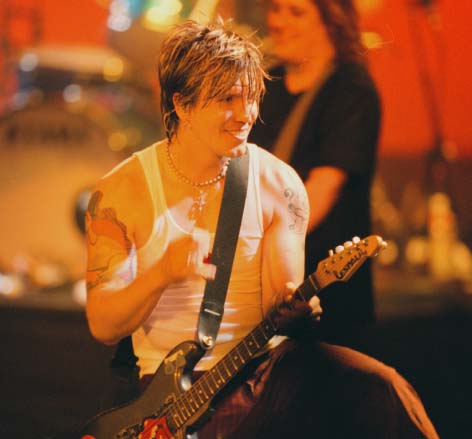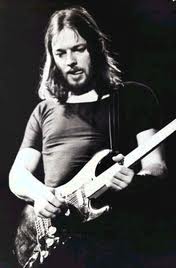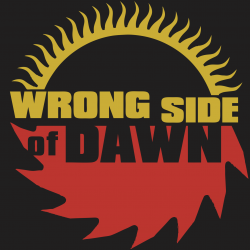OK, so a while ago I said we were going to go through the back-stories to all our songs. I lied; we didn’t. Now I’m going to un-lie and actually do it. Last time, we started with our first full-length track on the album, “Running Scared.” Today, we finally move on to the next track, “Out of Time.”
“Out of Time” started with the chorus chords, I think. I had come up with them in high school to go with one of Tyler Currier’s songs. I think they are kind of Goo Goo Dolls-ish, which makes sense for me at the time. But Tyler decided that they didn’t really fit with his song. As in, they didn’t really sound like part of the same song. I guess they still don’t really fit with the verse chords of the current song; that’s why the song needs the stop-start transition between verse and chorus.

I eventually came up with the verse chords by mistake. I was trying to go from a D to a D/C#, but my finger landed one string too high on an F#, and it seemed like I should go somewhere from there… In a couple minutes I had the rest of the progression.
I immediately went to show Nelson, but his reaction was lukewarm. In fact, he described the progression as “boring.” And I thought, “I’ll show him. These chords aren’t boring, they are pure gold!” Originally, I had strummed the chords, but I rewrote them again as more intricate finger-picking. Now Nelson approved. I had proven that my chords were not boring! Then again, maybe Nelson proved that my chords used to be boring. Either way, if he hadn’t criticized me, I never would have put in the extra work.
These new chords got thrown together with the old chorus chords I had lying around because… well, why not? I wasn’t just going to let them go to waste. I tried for a long time to give the song a bridge, but eventually decided it wasn’t necessary. The song uses only those two progressions.
I guess it’s pretty standard for a song to hit the (vocal) chorus at least three times, and that was my original plan for “Out of Time.” First would be the two choruses you hear, then a short guitar solo over the chorus chords, and the song would end on a repeated loop of the chorus vocal, fading out.
In order to facilitate the fade-out on my demo of the song, I had played the chorus chords over and over at the end. Just fooling around, I tried improvising some guitar melodies over this ending, and started to like what I was doing. I rewound the machine and pressed record. The first take didn’t quite work, as the chords stopped playing before I could squeeze in all the ideas I wanted to record. Rather than make the demo longer, I just tightened up the solo so that I could fit it in. The second take is here (skip to about three-quarters through if you don’t want to hear the boring part). It’s basically what I later recorded on the album.
I immediately fell in love with the idea of ending the song on a solo, and so the third vocal chorus went out the window. But there was still more to be done with the lyrics. As I wrote in an earlier post:
I also started to have second thoughts about my lyrics. A song with a guitar solo this good would need better lyrics than this…
…I figured that something was nostalgic and backward-looking about the sound of the guitar. From that jumping-off point, I fashioned some lyrics that worked sort of in reverse chronological order. The first verse starts in the present, watching the sun rise (on the wrong side of dawn, in fact). The second verse recalls an old friend. The last verse looks back to childhood, when you did stuff just because it was there to be done. Then the last line says there’s no more time for that, but hey…. GUITAR SOLO!!!!!!

The lyrics are still intentionally plain. I’m not very partial toward flowery language anyway, but I think these are plain even for me. I like to think that, if you just read my lyrics aloud, they’d sound more like regular speech than “poetry.” The last line is very quiet, very resigned to reality: “I could use a little more money. Guess that means I could use a little more work.” I like to think this leads well into the final solo which is, in contrast to the closing words, very big and cinematic. In order to facilitate this, my instruction to Anthony Santoro toward the end of the solo was, “Just be really loud and dramatic. Lots of crashes.” And of course, this again contrasts with the calm, march-like aftermath. The harmonized “oooh”s by Nelson and Karen also add to the intensity. I hope it sounds like a sudden recollection of a really old memory that you thought you forgot… but didn’t quite forget.
Anyway, I’ve probably already over-interpreted my own guitar solo. Never take the writer’s word for what something means, especially in the case of instrumental sections. So don’t just listen to me. Check it out yourself: “Out of Time.”





